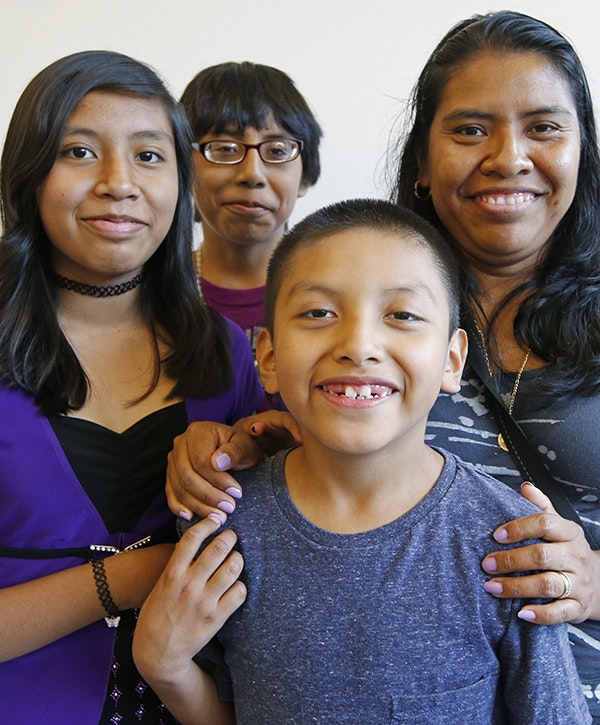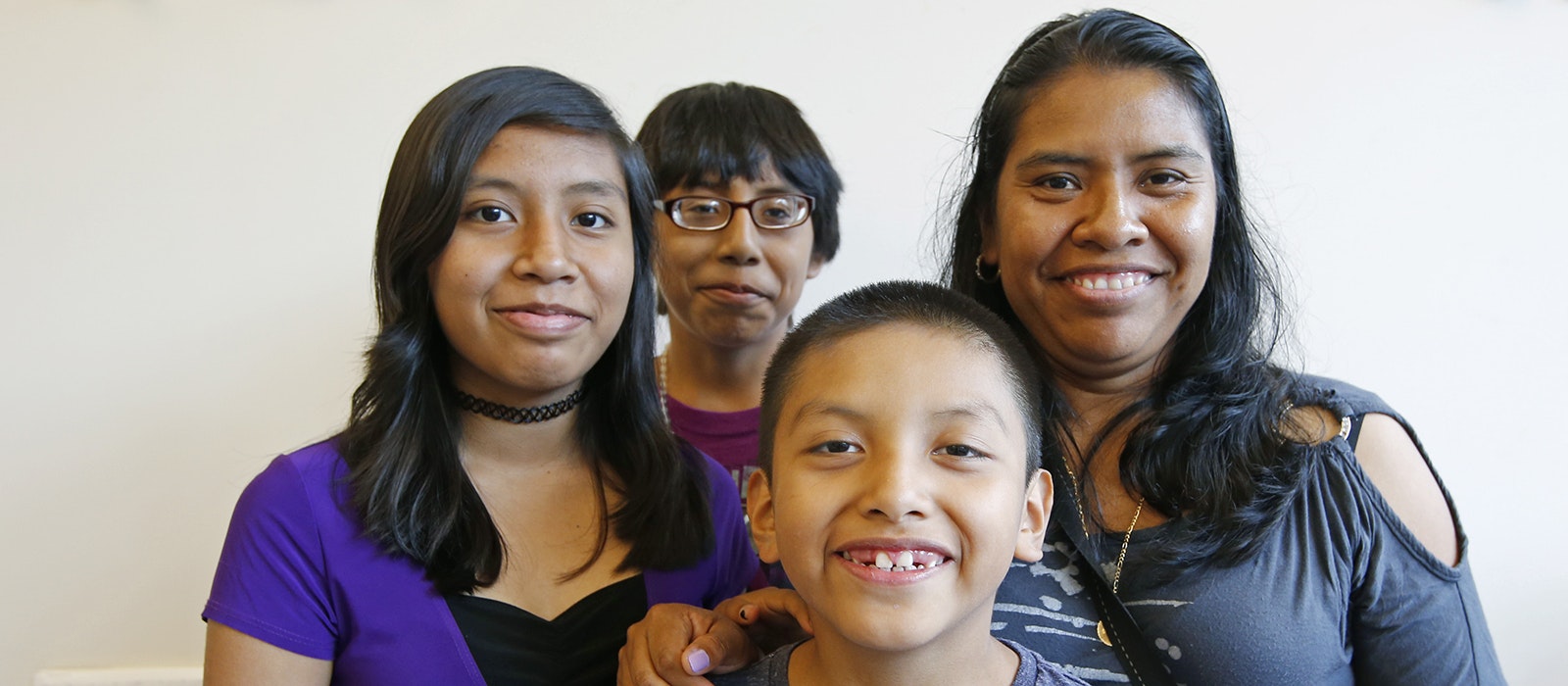Green card backlogs for family-based immigrants have grown steadily over the last thirty years, making lawful immigration and reunification difficult, if not impossible, for millions of families and keeping them separated for decades. U.S. citizens and green card holders applying today to sponsor a family member abroad expect to wait decades before their families can reunite in the United States.


“Nearly 4 million people are currently waiting abroad in the family-based immigration backlogs”
1| Millions of People are Waiting in Family-Based Immigration Backlogs
Many family-based immigration avenues have been significantly backlogged for decades, delaying family reunification and presenting a serious barrier for individuals attempting to immigrate through authorized immigration avenues.
Green card holders from certain countries sponsoring their unmarried adult children have been waiting in the backlog since as far back as 2001. By the time they are able to reunite with their children, they may have missed many life events and milestones, including weddings, graduations, or the birth of grandchildren, and some people pass away before being able to be together with their loved ones.
Notes: Backlog counts only include applications submitted to the Department of State for overseas processing; they do not include applications for adjustment of status within the United States
According to the State Department, nearly 4 million people are currently waiting abroad in the family-based immigration backlogs. This does not include family members already in the United States with some other immigration status who have applied to adjust their status to a green card.2
The State Department publishes a monthly Visa Bulletin, a document laying out which “priority dates”—the dates when petitions were initially filed—the government is processing for each preference category. The difference between priority dates in the Visa Bulletin and the current date gives a sense of how long current applicants have waited to be able to receive their green card.
Notes: Wait time is calculated as the difference in years between the Final Action Date and the first date of the month on the chart. For months where categories were current, wait time is set to 0 days. In some months, certain categories were “unavailable” because the annual numerical limit was reached, or some other issue; for those months, the most recent previous wait time was carried over.
For instance, wait times for third preference family-based immigrants (“F-3,” married adult children of U.S. citizens) have increased 900% since 1991. F-3 petitions granted a visa in 2021 had their initial petition filed in 2008, a nearly 13-year wait. The backlogs are even worse for individuals from countries subject to per-country limits; for example, wait times for first preference immigrants (unmarried adult children of U.S. citizens) from Mexico increased more than 1,700% since 1991, with applicants who started the process more than 22 years ago just now being able to secure their green cards.
“Family-based immigration makes up about 65% of annual lawful immigration”
2| Family Reunification is the Backbone of the U.S. Immigration System
The passage of the Immigration and Nationality Act of 1965 established the immigration system as we know it today, including the creation of the “preference system,” which admits new immigrants on the basis of family or employer sponsorship.
Family-based immigration makes up about 65% of annual lawful immigration, including nearly 85% of new immigrant arrivals to the U.S. over the last decade. In recent years, more than 80% of green card recipients from Mexico were sponsored by family members in the U.S., while more than 50% of recipients from Asia were sponsored by family members.
U.S. citizens can sponsor certain foreign-born relatives, designated as “immediate relatives” and including spouses, unmarried children, and parents, to immigrate immediately to the U.S. without any annual caps or numerical limits.1 Other relatives of U.S. citizens and lawful permanent residents, however, are not counted as “immediate relatives,” and are instead sponsored through a numerically limited Family Preference category.
For the past decade, about 220,000 individuals each year have been reunited with their family members in the United States through the family preference categories. While the annual limit for family preference admissions is calculated each year, it has been locked at its statutory minimum of 226,000 for the past twenty years.
There are five preference categories, in descending order of priority:
- First preference (F1) – unmarried sons and daughters (21 years of age and older) of U.S. citizens
- Second preference (F2a) – spouses and children (unmarried and under 21 years of age) of lawful permanent residents
- Second preference (F2b) – unmarried sons and daughters (21 years of age and older) of lawful permanent residents
- Third preference (F3) – married sons and daughters of U.S. citizens
- Fourth preference (F4) – brothers and sisters of U.S. citizens (if the U.S. citizen is 21 years of age and older)
Each of these categories is subject to numerical limits, including overall limits on the number of family preference immigrants admitted each year, as well as limits on how that annual total is divided among the preference categories and per-country limits on the number of individuals from a single country who may be admitted each year. Each of these limits is an additional factor in how long an individual may have to wait before they can receive their green card.
Requests to sponsor an immigrant family member are prioritized by category and by the date that they were received by the government (the “priority date”); when U.S. citizens or residents apply to sponsor more immigrants than are allowed under the numerical limits, a backlog forms, and individuals must wait until a green card is available under the law for them.
“The extraordinary wait times for a green card to be available causes significant hardship for American families forced to wait decades to reunite with their loved ones”
3| Backlogs are a Result of Congress’ Failure to Modernize the Immigration System
While the U.S. population has grown substantially in recent decades, the immigration system has not changed to keep pace. Our annual levels of immigration were established in the early 1990s and have remained largely unchanged since.
To make matters worse, the method used to calculate the annual number of employment- and family-based immigration is deeply flawed, and has led to family-based immigration levels being set at their absolute minimum every year for the past 20 years, while hundreds of thousands of green cards for family members go wasted, never used by any individuals, when they could be used to reunite families instead.
The extraordinary wait times for a green card to be available causes significant hardship for American families forced to wait decades to reunite with their loved ones, despite the fact that those individuals are already qualified to immigrate right now. Family separation takes a terrible emotional toll on families, and it imposes clear logistical, economic, and emotional hardships on families, and the growing nature of the backlogs makes the process uncertain and future planning impossible.
As the backlogs have grown larger and opportunities for immigration from certain countries have become more restricted, the U.S. has simultaneously seen a spike in requests for relief in other programs, such as the asylum program. While the populations seeking family sponsorship and asylum are certainly distinct, experts have argued that expanding immigration avenues, such as family- or employment-based immigration, could relieve pressure on humanitarian avenues and provide alternatives to unauthorized immigration.
Additionally, eliminating backlogs would bring immediate relief to families that have been waiting decades to reunify. Family ties facilitate integration in American communities, and provide a positive environment for business creation and workforce participation. FWD.us research shows that increased immigration levels with consistent levels of family-based immigration would yield the greatest economic benefits, greater than shifting to a higher share of “high skilled” immigration.3
“Only 65,452 family preference green cards were issued in FY2021 out of the annual 226,000 green cards available”
4| COVID-19 Response Further Restricted Family-Based Immigration, and Backlogs Still Grew Larger
The Biden Administration has failed to remedy substantial problems that could increase backlogs even further: COVID-related shutdowns, limited staffing, full or partial closures of embassies and consulates abroad, and inherited impact of the Trump travel bans. All of these factors contribute to increased processing times, posing difficulties to process the number of green cards up to the annual limits and adding to the growing backlogs.
Only 65,452 family preference green cards were issued in FY2021 out of the annual 226,000 green cards available, leaving hundreds of thousands of green cards unused (with many likely to be permanently wasted in the future), and keeping many more families needlessly separated.
The COVID-19 pandemic and administrative policies that have restricted immigration have also contributed to increasing backlogs in recent years, including in family-preference categories. The backlog of family and employment-based preference visas grew by 4% from November 2020 to 2021.
“Congress will need to increase annual immigration levels to eliminate backlogs and meet our country’s economic needs while addressing future workforce challenges”
5| Congress Can Act to Reduce and Eliminate Backlogs, Facilitate Family-Based Immigration
These backlogs have grown over many years, and despite intermittent success in reducing them for some categories, they have repeatedly reappeared and grown worse, making immigration impossible for many who qualify. To eliminate backlogs and restore fairness and efficiency to the immigration system, Congress must act.
Passing legislation to recapture green cards that were authorized but never issued in past years would be a significant step forward. Estimates show that family-based immigrants would benefit significantly from visa recapture, with more than 200,000 family-based green cards estimated to be eligible for recapture for backlogged applicants under some proposals. Legislation could also fix the formula so that family-based green cards that are not issued because of bureaucratic delay are not lost in future years.
Green card recapture would allow hundreds of thousands of immigrants and their families, including those sponsored in family- and employment-based categories, to secure a green card and all of its ensuing benefits fairly and expediently, including portable work authorization, travel authorization, and protection for family members in dependent statuses.
Alongside recapture, Congress should also act to eliminate per-country caps which restrict access to green cards based on country of origin. Legislation like the EAGLE Act would reform these caps so that individuals from certain countries do not face disproportionately longer wait times.
Ultimately, Congress will need to increase annual immigration levels to eliminate backlogs and meet our country’s economic needs while addressing future workforce challenges. Most importantly, this will ensure Americans can reunite with their family members in a fair and timely fashion.
Notes
- While not counting against numerical limits, the number of “immediate relatives” admitted each year does factor into the formula establishing how many family preference immigrants may be admitted each year. This is a significant reason why so many family- and employment-based green cards are “wasted” each year, and why Congress should consider recapturing lost visas and fixing the formula.
- As of September 2021, more than 340,000 applications for individuals present in the U.S. were already pending with USCIS, which does not include any accompanying dependent children or spouses.
- Demographically, this is also due to family-based immigrants staying in the U.S. longer and having more children than immigrants who arrive through other channels. These factors increase the total U.S. working-age population over time, and thus improving economic growth.
- The Congressional Research Service estimates 247,000 family-based green cards would be eligible for recapture, while Congressional staff for the House Judiciary Committee have shared estimates of 222,000. The Cato institute has published an analysis with estimates ranging from 149,000 to 422,000, depending on interpretation of the legislative language.
Get in touch with us:
Andrew Moriarty
Deputy Director of Federal Policy
Tell the world; share this article via...
Read related articles:
Get Involved
We need your help to move America forward. Learn what you can do.





